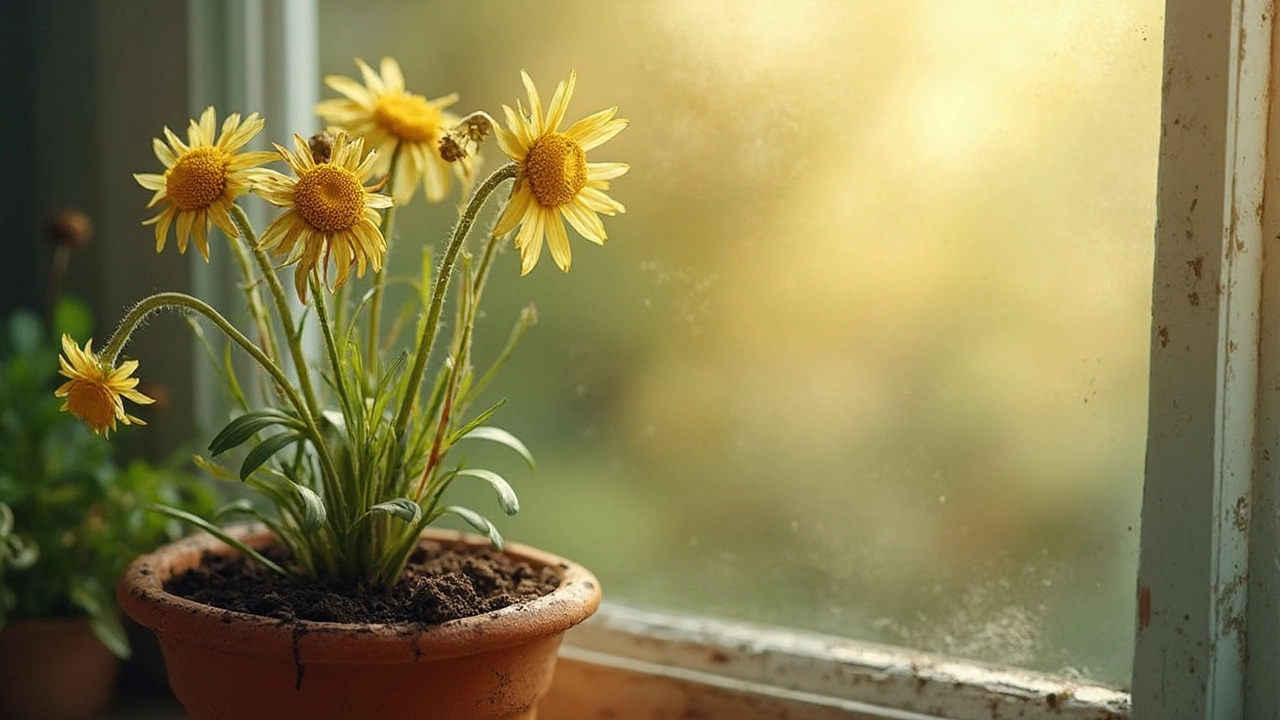Overwatering is a frequent issue for daisy enthusiasts, leading to droopy and sick-looking flowers. Recognizing signs like yellowing leaves and root rot is crucial to saving your beloved plants. This article delves into the distinct symptoms of overwatering, practical tips for correcting the problem, and ways to ensure thriving indoor daisies all year round.
Overwatered Daisies: How to Save Them and Prevent Future Mistakes
When your overwatered daisies, daisies showing signs of too much water like yellowing leaves, limp stems, and root decay start looking sad, it’s not just about water—it’s about balance. Daisies don’t need soaking. They thrive in well-drained soil and dry periods between waterings. Too much moisture traps air from the roots, suffocates them, and invites fungi that turn healthy roots into mush. This isn’t rare—it’s one of the top reasons gardeners lose daisies, especially in containers or during monsoon season in India.
What makes it worse is that people often think they’re helping by watering more when the plant looks wilted. But a drooping daisy isn’t always thirsty—it could be drowning. The real signs of overwatering aren’t the obvious ones. Look for dark, soft stems near the base, soil that stays wet for days, and a faint moldy smell. These aren’t just symptoms—they’re warnings. And if you’ve ever tried to save an overwatered plant by just cutting back water, you know it’s not enough. You need to act fast: stop watering, check the roots, and improve drainage. The drainage for flowers, how well water moves through soil or pots to prevent root rot is just as important as how much you water. A pot without holes, clay soil without amendments, or a balcony garden with poor slope can turn a simple watering routine into a plant killer.
Fixing an overwatered daisy isn’t magic. It’s basic plant first aid. Gently lift the plant, shake off the wet soil, trim any black or slimy roots, and repot it in fresh, airy mix—think compost mixed with perlite or coarse sand. Don’t rush to water again. Let the soil dry out completely, then water lightly. Place it in bright, indirect light—not full sun—until it recovers. And once it’s back, keep a simple schedule: check the top inch of soil with your finger. If it’s dry, water. If it’s damp, wait. This is the rule for almost all outdoor flowers in India, whether you’re growing them in pots, beds, or along a terrace edge.
Many of the fixes for overwatered daisies overlap with how you care for other common garden plants—like hydrangeas, zinnias, or even basil. That’s why you’ll find guides here on plant overwatering, the common mistakes and recovery methods for flowers and herbs suffering from too much moisture, how to fix clogged drip lines that flood roots, and how to make dense soil easier to work with. You’ll also learn how to spot early signs before the damage becomes obvious. These aren’t theoretical tips—they’re what real gardeners in India use every day to keep their plants alive through heat, rain, and humidity.
There’s no need to feel guilty if your daisies got too much water. It happens to everyone. The key isn’t perfection—it’s awareness. Once you learn to read your plants instead of following a fixed watering calendar, you’ll stop guessing and start knowing. And that’s the difference between plants that barely survive and ones that bloom all season long.
